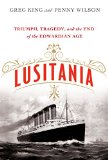Summary | Excerpt | Reading Guide | Reviews | Beyond the book | Read-Alikes | Genres & Themes | Author Bio

The Epic Story of the 1918 Pandemic
by John M. BarryAn epic history of the deadliest plague in human history - the great flu epidemic of 1918, which killed seven times as many people as died in the First World War.
No disease the world has ever known even remotely resembles the great influenza epidemic of 1918. Presumed to have begun when sick farm animals infected soldiers in Kansas, spreading and mutating into a lethal strain as troops carried it to Europe, it exploded across the world with unequaled ferocity and speed. It killed more people in twenty weeks than AIDS has killed in twenty years; it killed more people in a year than the plagues of the Middle Ages killed in a century. Victims bled from the ears and nose, turned blue from lack of oxygen, suffered aches that felt like bones being broken, and died. In the United States, where bodies were stacked without coffins on trucks, nearly seven times as many people died of influenza as in the First World War.
In his powerful new book, award-winning historian John M. Barry unfolds a tale that is magisterial in its breadth and in the depth of its research, and spellbinding as he weaves multiple narrative strands together. In this first great collision between science and epidemic disease, even as society approached collapse, a handful of heroic researchers stepped forward, risking their lives to confront this strange disease. Titans like William Welch at the newly formed Johns Hopkins Medical School and colleagues at Rockefeller University and others from around the country revolutionized American science and public health, and their work in this crisis led to crucial discoveries that we are still using and learning from today.
The Washington Post's Jonathan Yardley said Barry's last book can "change the way we think." The Great Influenza may also change the way we see the world.
Could such a plague happen again? Most experts seem to agree that it is not a case of if, but when - and the two likeliest candidates would probably be Avian Flu or SARS; but, of course, a rank outsider could naturally mutate at anytime, or worse still could be created in a laboratory (see 'Lab 257' by Michael Christopher Carroll which explores the inner workings of the government's top-secret laboratory on Plum Island, close to New York City, and its connections with the outbreaks of Lyme disease and West Nile virus).

If you liked The Great Influenza, try these:

by Thomas Levenson
Published 2025
The centuries-long quest to discover the critical role of germs in disease reveals as much about human reasoning—and the pitfalls of ego—as it does about microbes.

by Greg King, Penny Wilson
Published 2016
On the 100th Anniversary of its sinking, King and Wilson tell the story of the Lusitania's glamorous passengers and the torpedo that ended an era and prompted the US entry into World War I.